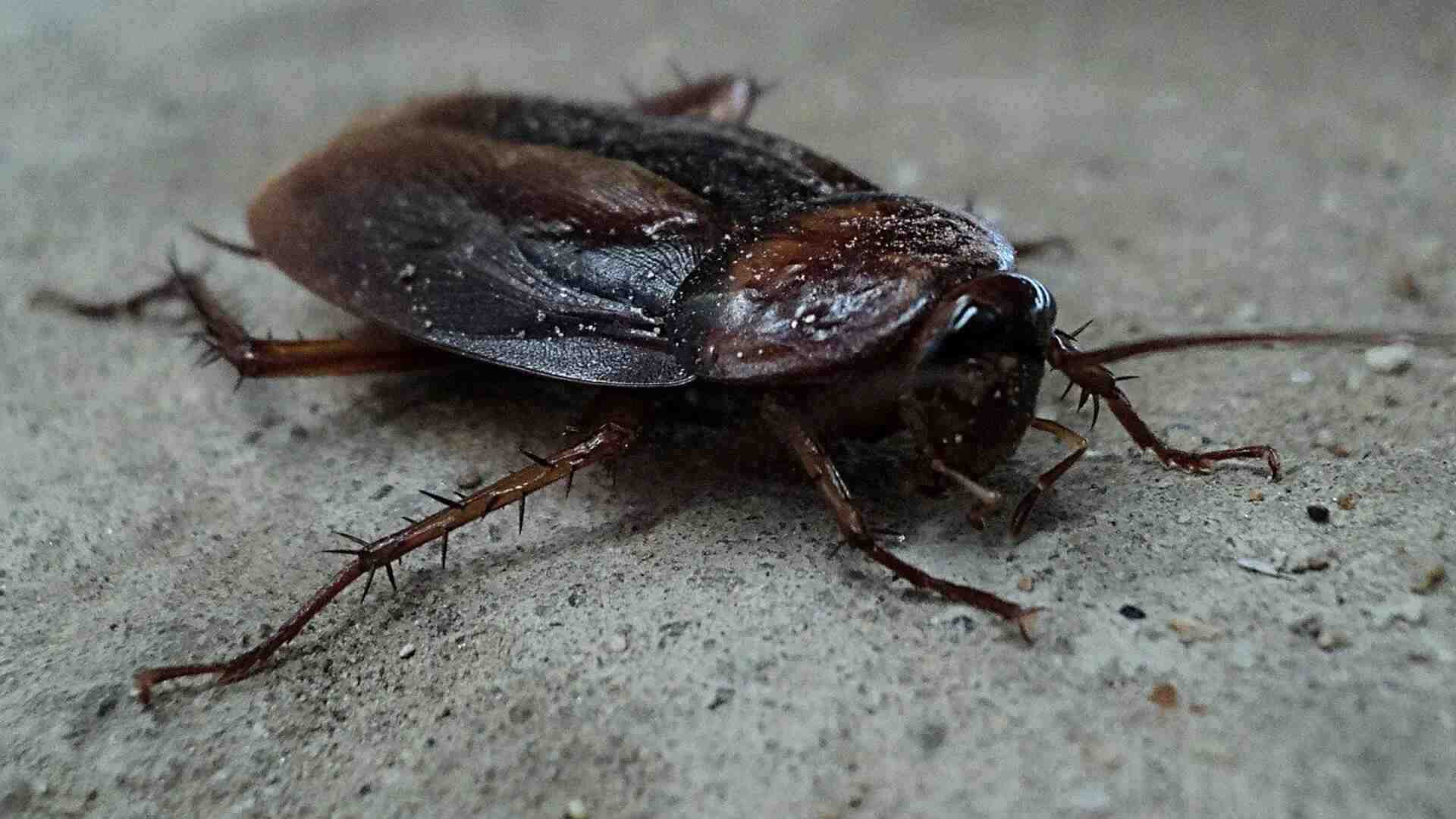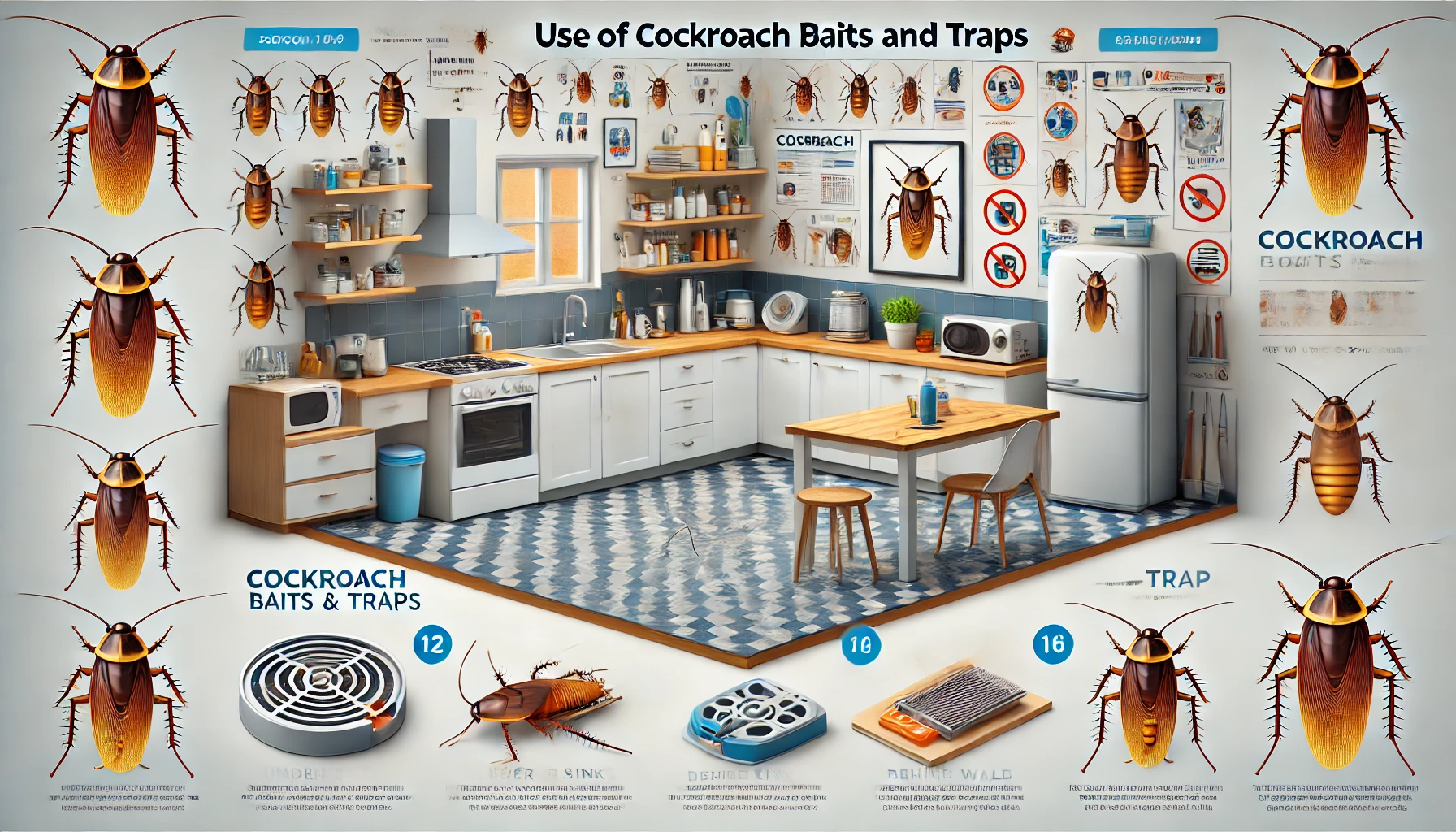Key Takeaways
- Cockroaches hate strong scents like peppermint, lavender, citrus, and eucalyptus, making these effective natural repellents.
- Essential oils, bay leaves, catnip, cedarwood, and neem oil disrupt roach activity and deter infestations.
- Diatomaceous earth, boric acid, and baking soda kill roaches upon contact or ingestion.
- A clean, dry home and sealed entry points are essential for long-term roach prevention.
- Combining natural repellents with preventative measures provides the best results in keeping roaches away.
 Cockroaches are one of the most flexible household pests, capable of thriving in various environments. While chemical pesticides are effective, they can be harmful to humans and pets. Fortunately, natural cockroach repellents offer a safer, eco-friendly alternative to deter roaches from your home. Certain strong scents, herbs, and DIY remedies can create an inhospitable environment for these pests.
Cockroaches are one of the most flexible household pests, capable of thriving in various environments. While chemical pesticides are effective, they can be harmful to humans and pets. Fortunately, natural cockroach repellents offer a safer, eco-friendly alternative to deter roaches from your home. Certain strong scents, herbs, and DIY remedies can create an inhospitable environment for these pests.
This guide will explore what smells cockroaches hate, how to use them effectively, and additional pest-proofing techniques to keep your home roach-free.
Why Do Cockroaches Hate Certain Smells?
Cockroaches usually rely heavily on their ability of sense of smell to locate food and navigate the route of their surroundings. Strong, pungent odors can overwhelm their sensory receptors, disrupt their pheromone trails, and signal danger, driving them away. Many plants, essential oils, and household substances contain natural insect-repelling compounds like menthol, limonene, and eucalyptol, which are known to repel roaches.

Not getting a solution?
Get your free pest control estimate today!Top Natural Cockroach Repellents
1. Peppermint Oil Why it Works: The strong menthol scent of peppermint oil is highly irritating to cockroaches, masking food odors and deterring their movement. Studies have shown that menthol-based essential oils act as effective insect repellents.How to Use Peppermint Oil for Roach Control
- Mix 10-15 drops of peppermint essential oil with 1 cup of water and spray along baseboards, under sinks, and in roach-prone areas.
- Soak cotton balls in peppermint oil and place them inside cabinets and drawers.
- Plant fresh mint around doorways and windows to act as a natural deterrent.
How to Use Lavender for Roach Control
- Place dried lavender sachets in closets, cabinets, and pantries.
- Mix a few drops of lavender essential oil with water and spray around the house.
- Grow lavender plants near entry points to create a natural repellent barrier.
 3. Citrus (Lemon & Orange Peels)
Why it Works: The scent of citrus, especially limonene, is a natural insect deterrent that cockroaches find unpleasant. The acidity also disrupts their pheromone trails.
3. Citrus (Lemon & Orange Peels)
Why it Works: The scent of citrus, especially limonene, is a natural insect deterrent that cockroaches find unpleasant. The acidity also disrupts their pheromone trails.
How to Use Citrus for Roach Control
- Place fresh lemon or orange peels in kitchen corners, under sinks, and near trash bins.
- Boil citrus peels in water, let it cool, and spray the liquid around the home.
- Use citrus-scented cleaning products to wipe down counters and floors.
How to Use Eucalyptus Oil for Roach Control
- Mix 10 drops of eucalyptus oil with 1 cup of water and spray along entry points and hiding spots.
- Diffuse eucalyptus oil in rooms where cockroaches are commonly found.
 5. Bay Leaves
Why it Works: Bay leaves contain aromatic compounds that cockroaches avoid. While not as strong as essential oils, they can still deter roaches in small spaces.
5. Bay Leaves
Why it Works: Bay leaves contain aromatic compounds that cockroaches avoid. While not as strong as essential oils, they can still deter roaches in small spaces.
How to Use Bay Leaves for Roach Control
- Place whole or crushed bay leaves in kitchen cabinets, under sinks, and near baseboards.
- Boil bay leaves in water and spray the solution in problem areas.
How to Use Catnip for Roach Control
- Scatter dried catnip leaves in dark corners, cabinets, and near garbage areas.
- Make a catnip spray by steeping the leaves in boiling water, straining, and using the cooled liquid as a mist.
How to Use Rosemary and Oregano for Roach Control
- Place fresh or dried rosemary sprigs in cupboards and storage areas.
- Mix oregano essential oil with water and spray in roach-prone areas.
 8. Cedarwood
Why it Works: Cedar contains thujone, a compound that disrupts insect nervous systems and repels cockroaches.
8. Cedarwood
Why it Works: Cedar contains thujone, a compound that disrupts insect nervous systems and repels cockroaches.
How to Use Cedarwood for Roach Control
- Place cedarwood chips or blocks inside cabinets and under furniture.
- Use cedarwood oil as a spray for high-traffic roach areas.
How to Use Chrysanthemums for Roach Control
- Grow chrysanthemums around entry points to repel roaches naturally.
- Use pyrethrum-based insect sprays derived from chrysanthemums for effective roach control.
How to Use Neem for Roach Control
- Mix 1 teaspoon of neem oil with 1 cup of water and spray around the home.
- Sprinkle neem powder in roach-prone areas.
Additional Natural Remedies & Prevention Tips

Diatomaceous Earth (DE)
- A non-toxic powder that dehydrates and kills cockroaches upon contact.
- Sprinkle in cracks, baseboards, and behind appliances.
Boric Acid & Sugar Bait
- A homemade roach killer where sugar attracts roaches, and boric acid kills them.
- Mix 3 parts boric acid with 1 part sugar and sprinkle lightly in roach-infested areas.
Baking Soda & Onion Trap
- Baking soda reacts with roach stomach acid, causing them to die.
- Mix diced onion with baking soda and leave in bottle caps around the house.

Keep a Clean and Dry Home
- Regularly vacuum, mop, and wipe down kitchen counters to eliminate food particles.
- Fix leaks and avoid leaving standing water, as roaches are drawn to moisture.
Seal Entry Points
- Use caulk or weather stripping to seal gaps around doors, windows, and pipes.
- Place door sweeps to block roach access from outside.
 By incorporating these natural repellentsinto your pest control routine, you can maintain a roach-free home without resorting to harsh chemicals. Consistency is key—regularly refreshing sprays, herbs, and cleaning routines will ensure long-lasting protection against cockroaches.
By incorporating these natural repellentsinto your pest control routine, you can maintain a roach-free home without resorting to harsh chemicals. Consistency is key—regularly refreshing sprays, herbs, and cleaning routines will ensure long-lasting protection against cockroaches.
If you feel things have gone out of control, it is advised to contact pest control professionals. Our team can provide a customized approach to protect your home effectively.
Visit our Species, Control, and DIY Guide sections for additional resources on cockroach and ways to tackle a cockroach infestation.





